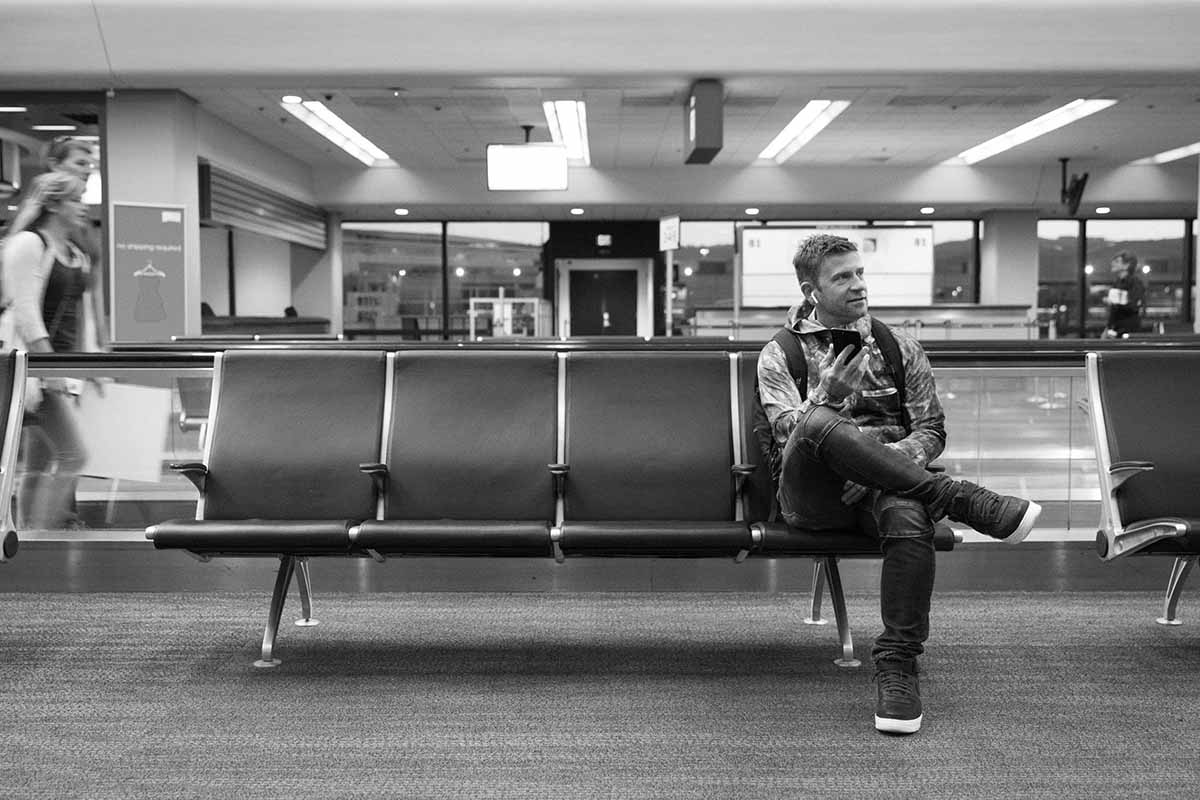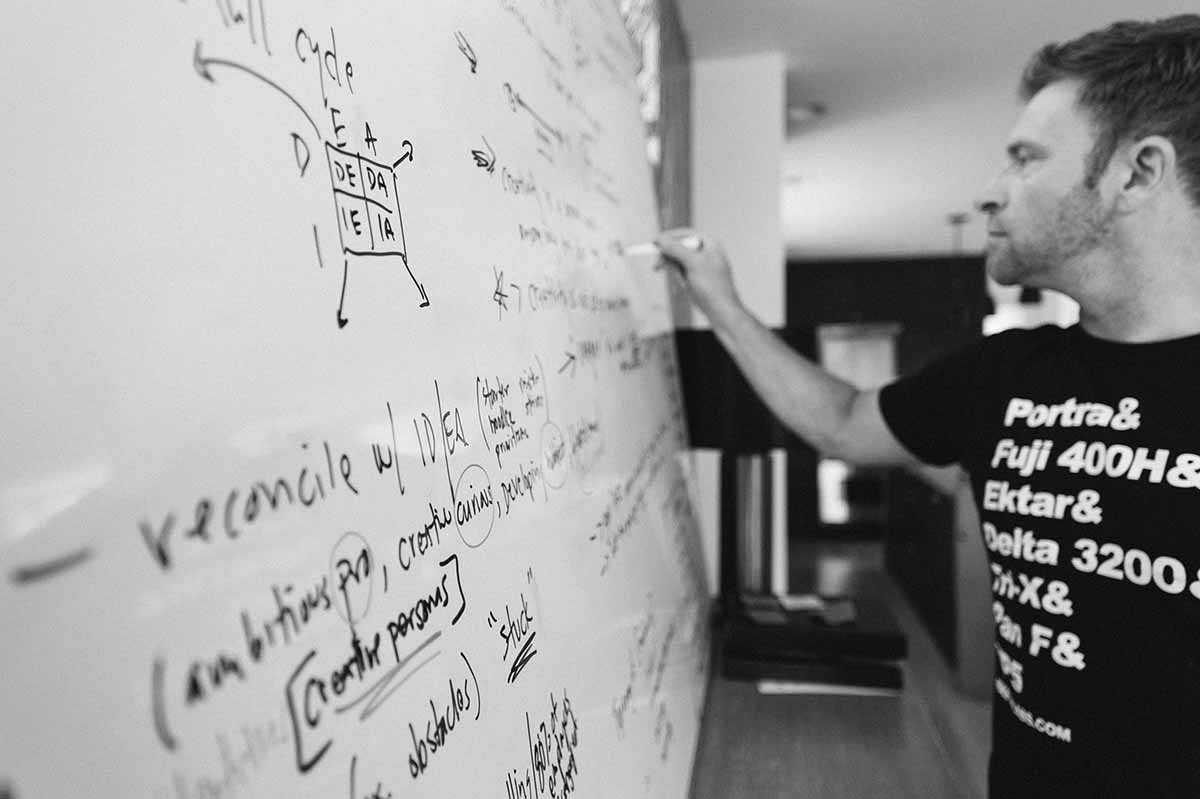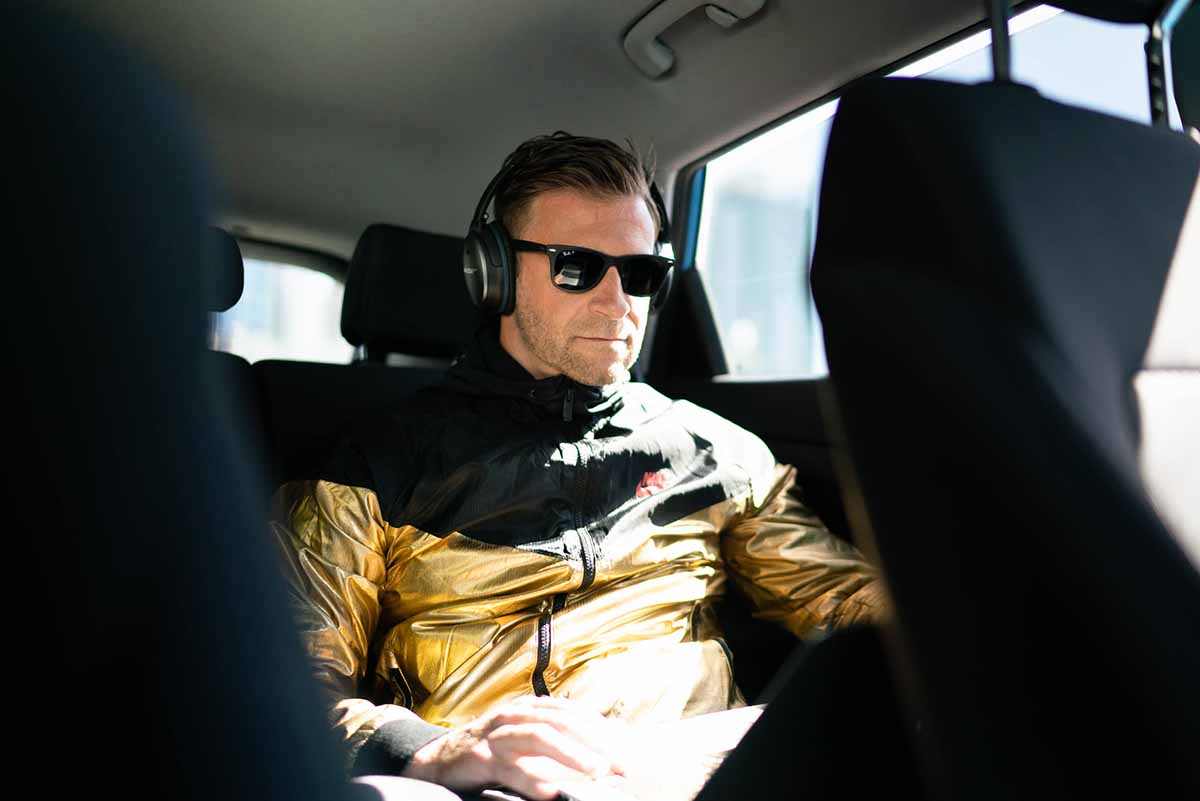
Taking a conference call at the airport
What does your optimal creative workspace look like? Do you like working from a traditional office, working remotely, or in a shared open space? How about a cozy café with your laptop or sketchbook? Can you work with a lot of activity around you, or do you need silence?
Listen to the Podcast
As creators, we often place a large emphasis on our workspace. Sometimes it might even block us from doing any creative work at all. Of course, a large, airy, well-lit work space of your own—preferably with an ocean view—would be ideal. But highly productive artists everywhere hunker down to work in cafés, restaurants, co-working spaces, parks, empty college classrooms, and waiting rooms—not to mention buses, trains, subways, and planes.
A huge part of one’s early endeavors—whether you’re picking up a new creative craft, starting a new business, or transitioning out of a full-time job into a freelance career—is about flexibility. Think about modifications or purchases you might make to become “creative ready” in as many environments as possible. This might mean carrying a sketch pad in your bag at all times, investing in a mobile audio rig or a digital tablet, or renting a spot at a co-working space.
If your intention is to become a professional creator being able to create on-demand is key. Professionals don’t wait for inspiration or for a perfect workspace. They get to work where they are, with what they have.
Reduce the Friction
So now let’s talk about reducing the friction to your productivity in any workspace.
You deserve a clean and orderly physical work space. Do you have a spot in your home that can be dedicated to your craft?
If possible, establish an area just for you and your work, where all your tools and supplies are close at hand and easy to find. You’ll be much more likely to use your scrapbooking nook if you don’t have to drag storage boxes full of supplies out from under the bed each time you want to work. You’ll practice your violin more regularly if you can leave your stand out with your sheet music ready to go.

Using a whiteboard to brainstorm and develop ideas
I love to have a nice, big whiteboard available for visualizing my ideas. If you aren’t able to set aside a dedicated space, create an orderly kit that can be easily transported to wherever you plan to work that day. Always aim to reduce the friction involved in starting.
Set the Scene
Obviously, everyone’s needs are different. What can you do to set the scene?
Some people are sensitive to any noise while they work. Others can’t concentrate unless there’s some chatter in the background.
I love noise-cancelling headphones. If you need to work in a shared area such as an office kitchen or coffee shop, consider investing in a pair. They are one of my favorite inventions of the past twenty years. On-demand silence has made my often nomadic professional life so much more manageable.

Use noise cancelling headphones to focus
Music, of course, is one of the most powerful cognitive enhancers available without a prescription, whether you prefer hip-hop, ambient sounds, or even white noise while you’re working. I wrote 90 percent of my book listening to the Productive Morning playlist on Spotify. It was just the kind of chill background music I needed, with no lyrics.
Don’t neglect your other senses, either.
Reduce the Clutter
Visual clutter in your space can be creatively fertile or a huge distraction. You might be happier standing while you work or ensconced on a couch under a blanket.
The novelist Mark Salzman’s cats kept jumping into his lap while he worked, so he took to wearing an aluminum foil “skirt” to deter them. On the other hand, the designer and entrepreneur Tina Roth Eisenberg’s cat jumps onto her throughout the day, and she considers those visits welcome breaks.
Try to be mindful about the aspects of your environment that make it conducive to your work and those that disrupt your flow; then take concrete action to optimize your space.
Final Thoughts
Remember – Making space for your work is important, but it isn’t the same as doing the work. A few thoughts to wrap this up:
- Are you telling yourself a story about where you can and can’t create? Preferences are fine, but the more things you need in order to create, the less likely you are to do just that.
- A “good enough” space to create is not just about your physical workspace. Your head space, heart space and emotional state, among other elements, all impact your creativity.
- Being able to create in a variety of circumstances means you’re more versatile. More versatile = more hirable, and more likely to get called back.
Get yourself set up, give yourself the time, tools, and whatever space you can, and then, for the love of everything holy, start. Just start.
Listen to the Podcast
Subscribe
This podcast is brought to you by CreativeLive. CreativeLive is the world’s largest hub for online creative education in photo/video, art/design, music/audio, craft/maker, money/life and the ability to make a living in any of those disciplines. They are high quality, highly curated classes taught by the world’s top experts — Pulitzer, Oscar, Grammy Award winners, New York Times best selling authors and the best entrepreneurs of our times.

















